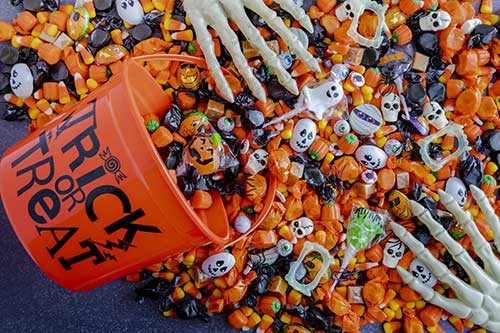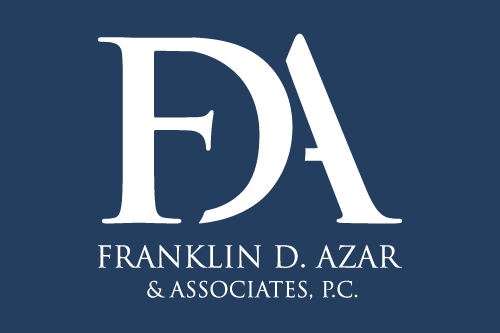Sweet! A Guide to Safe Halloween Candy For Toddlers
Americans will spend more than $2.5 billion on Halloween candy this year. That’s a lot of sweet stuff — some of it tasty, no doubt, and some of it downright spooky. For parents, trying to screen their kids’ haul and regulate their candy consumption can be a daunting task. Is it safe? Digestible? Even remotely nutritious?
Okay, maybe nutrition is too much to hope for. But preparing for a safe and happy Halloween for ghouls and goblins of all ages doesn’t have to be frightening. Here’s a guide to how to not get tricked by this year’s treats.
The Age Test for Safe Halloween Candy
Toddlers want all the candy the big kids are getting, but they shouldn’t have it. The American Academy of Pediatrics recommends against giving children five or under any hard candies (such as Life Savers, Gobstoppers, or Jolly Ranchers), gum, or super-chewy candy (caramels or taffy) because of the choking hazards they present. Hard candy, it turns out, is the number one reason for pediatric emergency room visits due to choking. A detailed list of popular items that toddlers shouldn’t have can be found on the KidNurse website.
Children under the age of two should probably not be consuming any kind of candy at all; that’s a lot of sugar for baby teeth. For those between two and six, take away the hard and sticky stuff; if candy is a must, consider items that are easy to chew, in smaller-sized portions, such as Hershey’s Kisses or pieces of a Peppermint Patty.
Halloween Candy for Kids with Allergies
Even if you routinely weed out the well-known brands of candy that are likely to wreak havoc on your child’s allergies—for example, the ones packed with peanuts and gluten — you’re not out of the woods yet, my pretty. Candy wrappers on the single-serving portions don’t always include a list of ingredients, and forget about full disclosure of what candies are made in facilities where they are exposed to various allergens.
Fortunately, there are a number of top candy brands, such as Starburst, Swedish Fish, and Dots, that boast of being free of the top eight allergens. Some even disclose that their facilities are free of peanuts, tree nuts, gluten, and so on. For a list that could influence what you offer trick-or-treaters yourself and that can help you sort through the allergy questions, check out this handy Halloween Candy Guide.
How to Check if Halloween Candy is Safe
First, let’s put an urban myth to rest: No need to go get the candy stash x-rayed, in search of razor blades slipped into apples, or analyzed by the crime lab for obscure poisons. Sensational stories about strangers tampering with candy handed out on Halloween have been debunked again and again; they have little or no basis in reality.
What you should do: Set rules about not sampling the candy while out on trick-and-treat rounds. Then sort through the candy when you get home. In addition to removing choking hazards or allergy triggers, look for:
- Unwrapped Items
- Homemade or non-commercial foods from people you don’t know
- Unusual smells or discoloration
- Torn packaging or pinholes in wrappers
In other words, you want your candy looking like it just came out of the factory. If that’s not the case, get rid of it.
Healthy Alternatives to Halloween Candy
If you shudder at the idea of your little zombie plunging into a sack of refined sugar, there are plenty of other options out there that can address a sweet tooth without nuking it. Raisins and dried fruit are reasonably healthy alternatives. Some parenting experts recommend handing out school supplies or small toys instead of candy, or whipping up your own trail mix — but you also have to deal with other parents’ concerns about choking hazards or homemade treats (see above). Even if you can’t take candy out of the picture, though, you can do what parents have done for generations: Set limits on how much Halloween candy is consumed each day, so that the joy of the holiday lasts a little bit longer.
The Personal Injury Attorneys at FDAzar
For more than thirty years the attorneys at Franklin D. Azar & Associates have helped thousands of injured people obtain complete and timely compensation for their losses. Our proven track record and expertise have allowed us to grow into the largest personal-injury law firm in Colorado, with offices in Denver, Aurora, Thornton, Fort Collins, Greeley, Grand Junction, Colorado Springs, and Pueblo. If you’ve been injured in a bus, car, truck, or motorcycle accident, you may be entitled to compensation. Please call the car accident attorneys at FDAzar day or night at 720-372-2824 or contact us here for a free consultation and no-obligation evaluation of your case.



